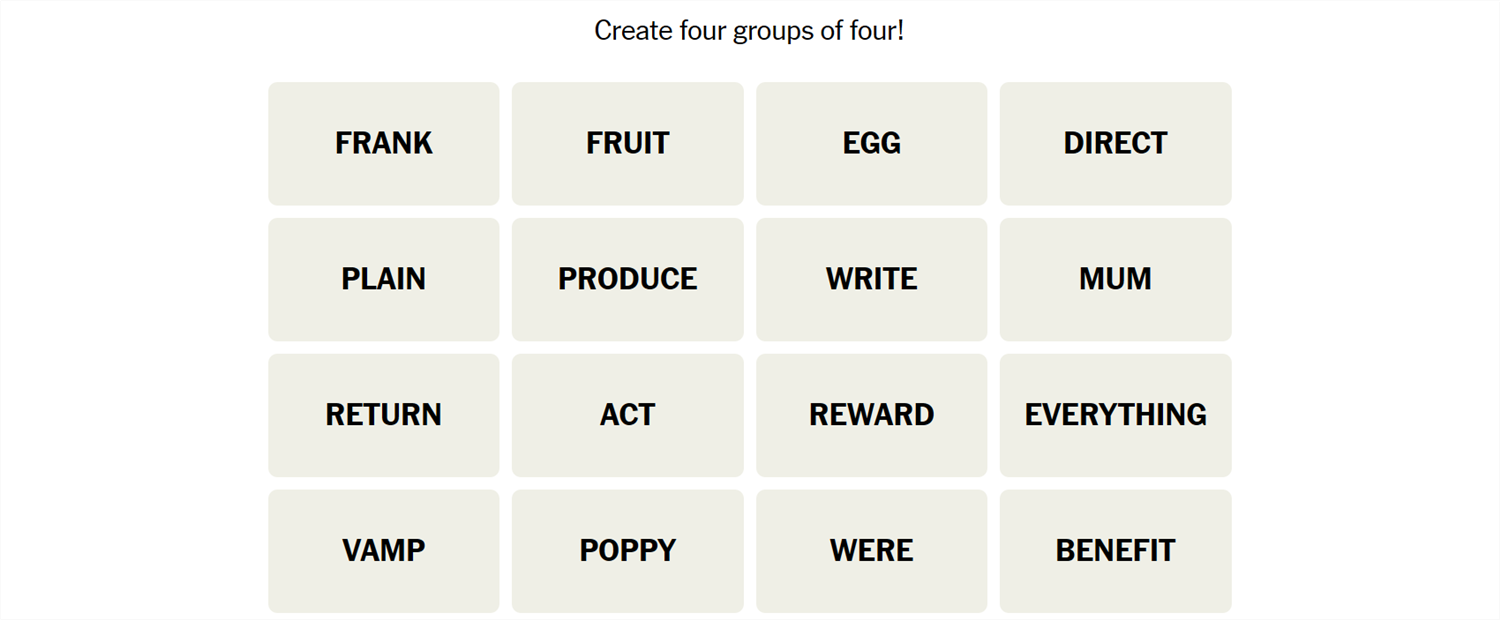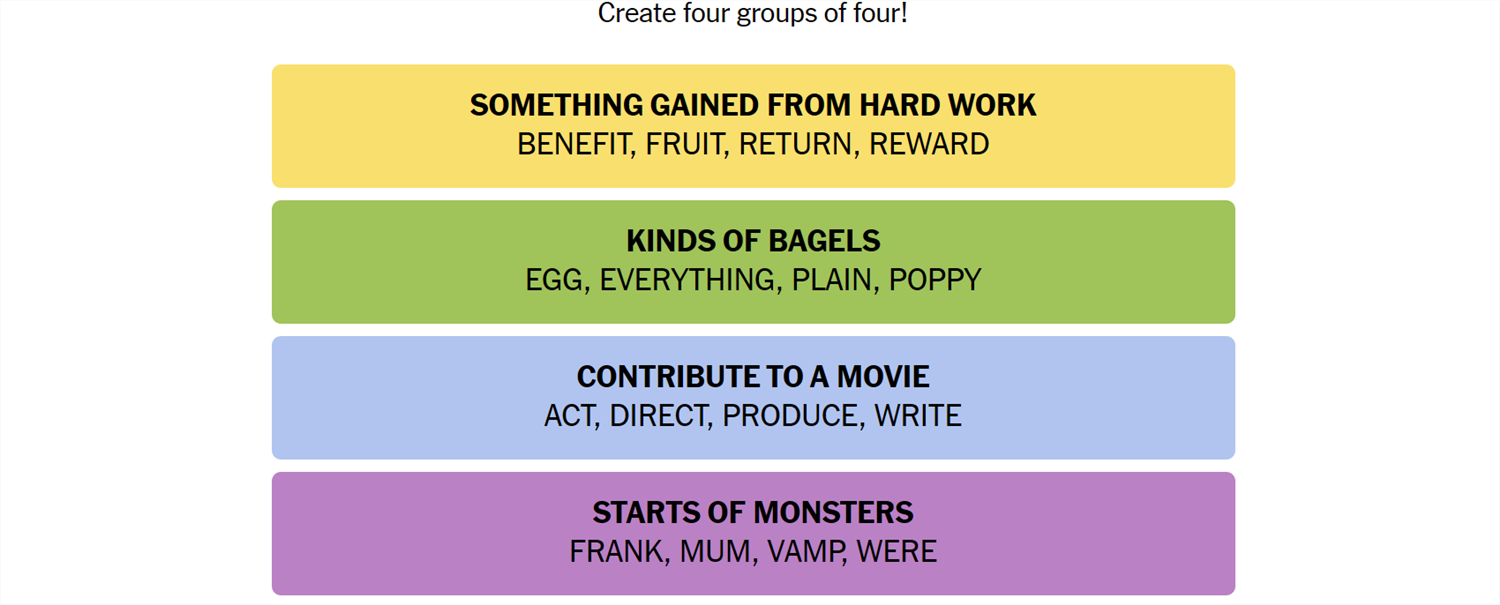Key Takeaways
Connections is a game from the New York Times that challenges you to find the association between words. It sounds easy, but it isn’t—Connections categories can be almost anything, and they’re usually quite specific. If you need a hand getting the answers, we’ve got you covered.
What Is Connections?
Connections is a game from the New York Times. The objective is simple: sort 16 words into groups of 4. Each group of words will be connected by some common idea or theme. That common element could be anything. We have seen everything from games that rely on the number of letters in the words to categories that require you to spot an extra letter at the end of the word. Sometimes they’re references to economics, other times they reference fairy tales. There is no telling what sort of association there will be between words.
Once you’re confident you understand the connection, select 4 words, then hit “Submit.” You have only four attempts in total, so don’t be too guess-happy.
Hints for Today’s Connections Groups
Here are a few small hints for the 329th Connections game to get you started:
- Yellow: When things pay off.
- Green: A baked good famously from New York City.
- Blue: Involved in the creation of visual media.
- Purple: Featured prominently in horror movies.
What Are Today’s Connections Groups?
If you still need help, the actual group names are:
- Yellow: Something Gained From Hard Work
- Green: Kinds of Bagels
- Blue: Contribute to a Movie
- Purple: Starts of Monsters
Today’s NYT Connections Answers
Something Gained from Hard Work (Yellow):
Benefit, Fruit, Return, Reward
Kinds of Bagel (Green):
Egg, Everything, Plain, Poppy
Contribute to a Movie (Blue):
Act, Direct, Produce, Write
Starts of Monster (Purple):
Frank, Mum, Vamp, Were
How Did We Solve This Connections Game?
May 5th was pretty normal.
The first group I spotted was Green. Everything and poppy wound up next to each other, and I was instantly reminded of bagels. A quick survey of the words also produced plain and egg—also “Kinds of Bagels.”
Further shuffling put benefit, reward, and return together. They can all represent a similar idea, some kind of return on investment. Fruit is really the only word that could conceivably match up, so I took a chance on it. Together, the 4 are “Something Gained from Hard Work,” and belong to the Yellow group.
Vamp immediately struck me as a shortened version of “Vampire,” and I decided to check other words to see if they were also missing endings. Unfortunately, there were 5 words that had potential: frank, mum, were, act, and direct. However, if we apply a monster theme, then frank(einstein), mum(my), and were(wolf) seem to be the most likely candidates. Purple was “Starts of Monsters.”
That left act, direct, produce, and write as Blue. In isolation, they’re pretty easy to spot as terms associated with film or television making. The proper name of the group is “Contribute to a Movie.”
How Do You Guess Connections Groups?
There is no quick, reliable way to approach Connections like there is with Wordle, since Connections isn’t algorithmic. However, there are a few things to keep in mind that can help.
- Look for similar parts of speech. Are some words verbs and others nouns? Are some adjectives? Try mentally grouping them based on those categories and see if any other patterns jump out at you.
- Are the words synonyms? Sometimes categories will just be synonyms for a phrase, or very close to synonyms. Don’t rely too closely on this, though. Occasionally, Connections will deliberately throw in words that are sometimes synonyms to mislead you.
- Try saying the words. Sometimes, saying the words helps. One puzzle we saw included the words go, rate, faster, clip, pace, speed, move, commute, and hurry—all of which are obviously related to the idea of motion. However, when you say them, it becomes a little more obvious that only four (go, move, hurry, faster) are things you’d actually say to prompt someone to get moving.
- Expect the red herring. Connections usually has words that could be plausibly, yet incorrectly, grouped together. Take the words Bud, Corona, and Light, as an example. You might instinctively see those three words together and assume they’re lumped together in a category related to beer—but they weren’t.
- Look for distinct words. If a word on your board doesn’t have multiple meanings or can really only be used in one context, try using that word as the basis for a category.
- Shuffle the board. Sometimes, moving words around will help you look at them in new ways.
If you didn’t solve this one, don’t feel too bad—there’s always tomorrow! And those words may align with a topic you’re interested in, giving you a leg up on the competition.






